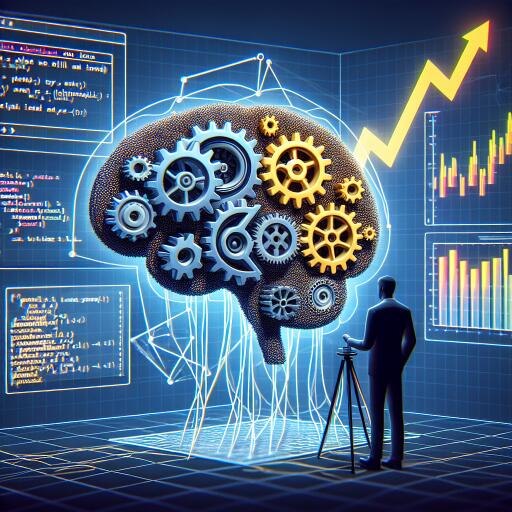Machine Learning Engineering: Building and Optimizing Machine Learning Models
Machine learning engineering merges disciplines such as computer science, data analytics, and mathematics to craft intelligent systems that learn and adapt. The demand for expertise in building and optimizing machine learning (ML) models is growing as businesses increasingly value the potential of ML technologies.
Understanding Machine Learning Engineering
Machine learning engineering focuses on applying self-improving algorithms. Unlike conventional programming, ML allows a system to learn from data patterns and make informed predictions or decisions without explicit programming for each task.
Central to ML is the model training process using historical data, enabling the model to predict or recognize patterns in new data. The effectiveness of ML models heavily relies on their engineering, training, and optimization.
Key Components of Machine Learning Models
Key elements essential for developing successful ML models include:
- Data: The foundation of any ML system, critical for training the model.
- Algorithms: The mathematical instructions that dictate the model’s learning process from the data.
- Features: Measurable data attributes used in training the model.
- Model: The mathematical representation of the learning algorithm.
- Evaluation: Metrics such as accuracy, precision, recall, or F1 score to assess a model’s performance.
Understanding the interaction of these components is crucial in the ML pipeline for creating effective models.
Building Machine Learning Models: The Process
Machine learning model development is a multi-stage process from data preparation to deployment:
- Data Collection and Preparation: Gathering high-quality, relevant data is critical. The data must then be cleaned and transformed through feature engineering for the best model performance.
- Model Selection: Choosing the right algorithm based on the problem type, often employing ensemble methods to enhance performance.
- Model Training: The phase where the algorithm learns from the data, requiring iterative tuning and validation.
- Evaluation and Metrics: Using specific metrics to assess the model’s effectiveness based on the ML task’s goals.
- Model Deployment: Integrating the model into real-world environments and setting up necessary APIs for interaction.
Optimizing Machine Learning Models
Optimization ensures models perform optimally with minimal computational resources. Strategies include:
- Hyperparameter Tuning: Adjusting parameters to improve model performance through automated tools like Bayesian optimization.
- Regularization: Techniques such as L1 and L2 regularization to prevent overfitting by simplifying the model.
- Dimensionality Reduction: Techniques like PCA to reduce input features, easing model training and interpretation.
- Model Pruning and Quantization: For deep learning models, reducing size and computational demands without sacrificing accuracy.
- Using Distributed Computing: Employing frameworks like Apache Spark or TensorFlow for processing large datasets or training complex models efficiently.
- Continuous Monitoring and Updating: Keeping models accurate and relevant through regular updates and retraining with new data.
Conclusion
Mastering the science and art of building and optimizing machine learning models is crucial as ML drives innovation across various industries. Focusing on data quality, feature engineering, model selection, and continuous optimization allows machine learning engineers to develop models that bring significant value and maintain business competitiveness.
Continuous monitoring and updating of models ensure sustained accuracy and relevance, affirming machine learning’s role as a pivotal tool for future business success.









